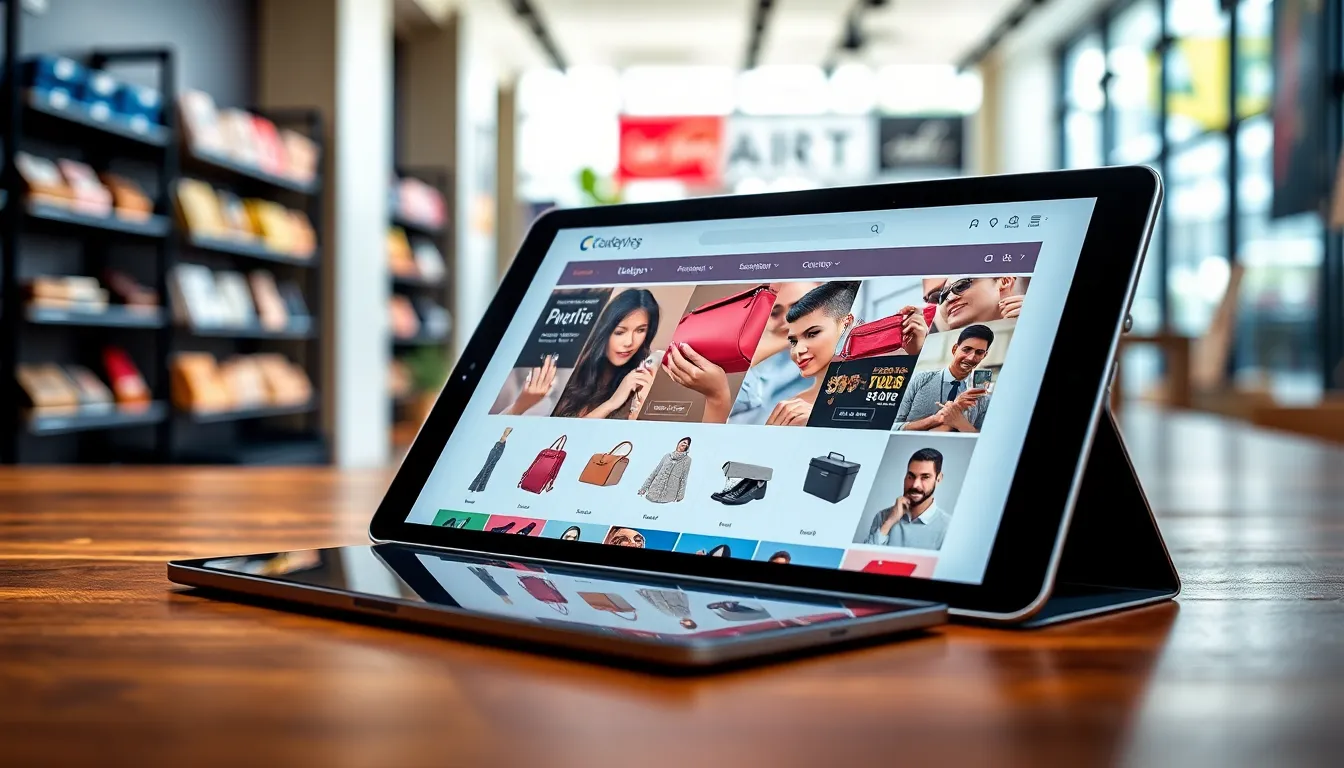In today’s fast-paced digital landscape, tablet storefronts are revolutionizing the way businesses connect with consumers. These sleek, interactive platforms offer a seamless shopping experience, allowing users to browse products, make purchases, and engage with brands at their fingertips. With the rise of mobile commerce, tablet storefronts have become essential for retailers aiming to capture the attention of tech-savvy shoppers.
As more consumers turn to tablets for their shopping needs, businesses must adapt to this trend. Tablet storefronts not only enhance customer engagement but also provide valuable insights into consumer behavior. This article explores the key features, benefits, and strategies for creating an effective tablet storefront that drives sales and fosters brand loyalty. Whether you’re a small business or a large retailer, understanding the power of tablet storefronts can give you a competitive edge in the evolving market.
Table of Contents
ToggleOverview of Tablet Storefronts
Tablet storefronts represent a significant evolution in the digital retail space, offering businesses a unique opportunity to engage consumers. These platforms serve as interactive environments where users can explore product ranges with ease, accessing information that drives purchasing decisions.
Key Features of Tablet Storefronts
- User-Friendly Interface: Intuitive designs facilitate navigation and enhance the shopping experience.
- Rich Media Integration: High-resolution images and videos provide engaging product presentations.
- Personalized Experiences: Data-driven insights allow for tailored recommendations, boosting customer satisfaction.
- Secure Payment Options: Multiple, secure payment methods foster trust and encourage conversions.
Benefits of Tablet Storefronts
- Increased Engagement: Interactive features encourage deeper exploration of products.
- Maximized Sales: Streamlined checkout processes lead to higher conversion rates.
- Enhanced Brand Exposure: Unique storefront designs can strengthen brand identity.
Strategies for Successful Tablet Storefronts
- Optimize for Touchscreen Interaction: Design should prioritize ease of use for tap-and-swipe actions.
- Implement Analytics Tools: Analyzing user behavior helps businesses refine their strategies.
- Regular Content Updates: Fresh content keeps the platform relevant and encourages repeat visits.
Features of Tablet Storefronts

Tablet storefronts incorporate various features that enhance user experience and promote effective shopping behaviors. These features contribute to higher engagement, improved sales conversions, and enduring brand loyalty.
User Interface Design
User interface design plays a crucial role in tablet storefronts. Designers prioritize simplicity and clarity, ensuring users navigate seamlessly through product categories. Touch-friendly buttons facilitate effortless interaction, while intuitive layouts reduce cognitive load. Visual hierarchy guides users through important elements, enhancing product visibility. Consistent branding across all screens reinforces brand identity, fostering trust. Color schemes and typography are chosen carefully to enhance readability and appeal, supporting an overall engaging environment.
Functionality and Performance
Functionality and performance are vital for successful tablet storefronts. Fast loading times improve user satisfaction, reducing bounce rates. Interactive features, such as swipeable galleries and product zooming, enhance engagement. Search functionality allows users to find products quickly, streamlining their shopping experience. Mobile-optimized payment gateways ensure secure transactions, increasing consumer confidence. Additionally, integration with inventory management systems provides real-time stock updates, preventing customer frustration and optimizing sales. These performance aspects ensure that the storefront meets the expectations of modern consumers efficiently.
Benefits of Using Tablet Storefronts
Tablet storefronts significantly enhance interactions between businesses and consumers by providing an enriched digital shopping experience. The benefits associated with these platforms contribute directly to improved sales and customer satisfaction.
Enhanced Customer Experience
Enhanced customer experience results from the engaging and interactive nature of tablet storefronts. Customers enjoy intuitive navigation with touch-friendly interfaces, allowing seamless product browsing and selection. Rich media integration, such as high-quality images and videos, fosters product engagement, while personalized recommendations based on browsing history improve relevance. Instant access to information and customer support further increases satisfaction, encouraging longer browsing sessions and repeat visits.
Increased Sales Opportunities
Increased sales opportunities arise as tablet storefronts facilitate easier purchasing processes. They often feature one-click purchasing options and secure payment gateways that streamline transactions. Moreover, integration with inventory management systems ensures product availability is accurately reflected, minimizing potential lost sales due to stockouts. Analytics tools within these platforms allow businesses to track customer behavior, optimizing sales strategies based on data-driven insights. The combination of these elements leads to higher conversion rates, driving revenue growth for businesses.
Popular Tablet Storefront Platforms
Various platforms cater to the growing demand for tablet storefronts, each offering unique features and capabilities. Understanding these platforms enables businesses to select the one that best fits their needs and consumer preferences.
Comparison of Leading Platforms
| Platform | Key Features | Pricing Model | Target Audience |
|---|---|---|---|
| Shopify | Easy setup, customizable templates, mobile responsiveness | Monthly subscription | Small to medium-sized businesses |
| Magento | High scalability, extensive features, customizable backend | Open-source and subscription | Large enterprises and developers |
| WooCommerce | WordPress integration, flexible plugins, user-friendly interface | Free with paid add-ons | Small businesses using WordPress |
| BigCommerce | Multi-channel selling, built-in SEO tools, responsive design | Monthly subscription | Mid-market to large enterprises |
| Squarespace | Beautiful templates, integrated marketing tools, excellent design capabilities | Monthly subscription | Creative professionals and businesses |
Unique Selling Points
- Shopify: Provides an intuitive interface, making it accessible for users without technical expertise. Also offers extensive customer support options.
- Magento: Known for customizability, suitable for businesses needing tailored solutions and robust integration capabilities with other systems.
- WooCommerce: Leverages the WordPress ecosystem, which allows for abundant plugins and themes. Ideal for businesses already familiar with WordPress.
- BigCommerce: Offers multi-channel integration, enabling sellers to engage customers across various platforms like eBay, Amazon, and social media seamlessly.
- Squarespace: Stands out with its focus on design aesthetics and user experience, making it a preferred choice for visually driven brands.
These platforms illustrate the variety available in the market, helping businesses create engaging and responsive tablet storefronts that cater to modern consumer expectations.
Tablet storefronts are reshaping the landscape of digital commerce. By providing interactive and engaging shopping experiences, they help businesses connect with consumers on a deeper level. These platforms not only enhance user experience but also drive sales and foster brand loyalty.
As the digital marketplace continues to evolve, adapting to the preferences of tech-savvy shoppers is crucial. The right strategies and features can transform a simple storefront into a powerful sales tool. Embracing this technology enables businesses to stay competitive and meet the demands of modern consumers effectively.


